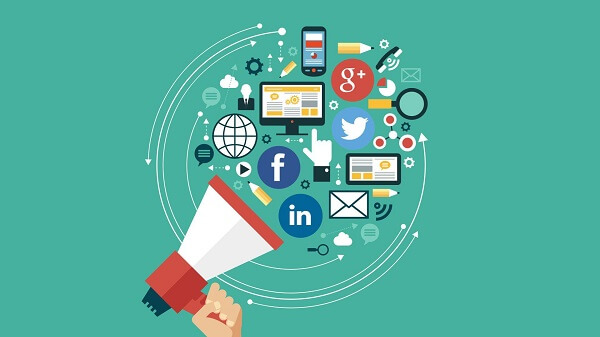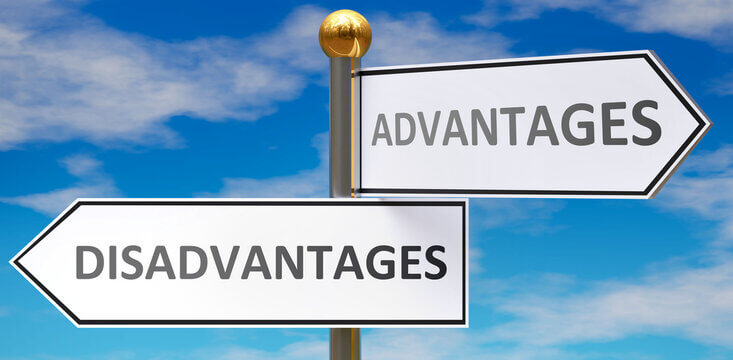Advantages and Disadvantages of Media
Media is currently serving as one of the important components in everyone's life as we all highly rely on it to get any update, either information or any news. Although this article is going to be focused on the advantages and disadvantages of media, before going to discuss it, first let's understand what media is and why it is essential nowadays.
The media plays a crucial role in our culture. The media is a powerful and simple means of communication. The media is a means through which information and data from the country and overseas are delivered to millions simultaneously. It evolved with time, and people today convey their point of view in front of everyone through print media, mass media, and social media. Radio, television, newspapers, and the Internet are today's most accessible forms of media.

People began publishing their opinions or crucial facts about the country and the world through newspapers. This enabled information to reach many individuals at once in a very short period. Following this was the radio, which allowed us to listen to tunes, other information, and news. By adjusting the radio frequency, information started to spread more quickly. Following this, television triggered a media revolution. In India, the Doordarshan was the first channel for Indians to watch on television. Many serials and educational programs used to be broadcast on television for entertainment, and news began to be shown as well.
Types of Media
Media frequently comprises the material and the physical equipment required to deliver it, such as television programs. The many routes via which information and entertainment reach an audience are referred to as media categories. Media may be divided into four main categories:
I. Print Media (Newspapers, Magazines)
II. Broadcast Media (TV, Radio)
III. Outdoor or Out of Home (OOH) Media
IV. Internet
- Print media: This is the media your parents grew up with and is still relevant today. Print media, sometimes described as conventional or "old-fashioned" media, comprises periodicals, newspapers, books, and comic books. Print media has been utilized with desktop publishing software and electronic book reading technologies.
- Broadcast Media: Broadcast media is a type of communication that uses audio, text, and graphics over the Internet. Web media includes things like films, photographs, and graphics. You have owned the material since you created it. Podcasts, websites, blog entries, and videos are popular owned content today. Owned media can also include content developed by your staff as long as it is documented in a contract signed by both sides.
- Outdoor or Out of Home Media: OOH media was originally restricted to ideas such as billboards and other print advertisements, but the footprint of outdoor advertising is expanding every day, with new inventory for marketers to occupy. It now incorporates dynamic programming on digital screens in sites such as bus stops, gas stations, airports, retail kiosks, subway platforms, and even the sides of buses or automobiles. Essentially, OOH advertising potential exists where consumers may interact with branded material in public.
- Internet: The Internet is a global channel for transferring information via a network of interconnected computers. It is a fast-expanding advertising medium. It is a future media with endless advertising possibilities. It entails using the Internet to display a website or e-commerce gateway to the rest of the globe. Email marketing, social media marketing, online adverts, and mobile marketing are all internet advertising. It offers customers a rich visual user interface. Anyone with a computer and a broadband connection may use it.
Important Features of Media
- Power of users: Interactivity also gives the audience additional influence. The audience may utilize streaming services to follow the many television programs that they want to watch at their convenience. The audience is best classified as users in certain new media compositions because the gap between media producers and their customers is closing.
- Space for interactivity: New media architectures usually encourage more involvement than traditional media. It allows the audience to interact with and engage with the information received from the media.
- Better accessibility: Open media is another word for online media. People with the resources and broadband internet connection can have instant access to a wide range of media content (much of which is free). It enables media companies to profit by shifting toward various subscription services and adding considerable advertising to attract more viewers.
Advantages of Media
- People get the most recent news quickly. Distance is not a barrier to providing knowledge to individuals from anywhere on the planet. People receive daily news updates from media sites, which keep them up to speed on current trends and occurrences worldwide.
- The media teaches the general public. The mob learns about health issues, environmental preservation, and other relevant topics through television and radio programs.
- Through media, people may put their secret abilities to use. Media allows them to display their secret talents such as humor, performance, singing, reciting, etc.
- The media is an excellent instrument for advertising mass consumer items and increasing asset sales.
- Electronic media encourages electronic duplication of information, lowering production costs and making mass education possible.
- The media may help people learn more about a variety of topics.
- It is a good source of enjoyment. People are entertained by music and television shows.
- The media facilitates the spread of multiple cultures by showing various cultural activities. It encourages people throughout the world to be accepting of one another's differences.
Disadvantages of Media
- People spend too much time on the Internet, viewing or bingeing content. Their relationships with friends, family, and neighbors may suffer as a result.
- The internet provides imposters, fraudsters, hackers, and other predators with the opportunity to execute illegal activities without the victims' awareness.
- Some media subjects are unsuitable for youngsters; restricting access to such information might be difficult for elders in some situations.
- Some television shows and online media can be highly addicting to most children and adults, resulting in decreased productivity.
- It frequently makes drug and alcohol usage look cool, which might harm the country's young.
- Some people attempt stunts that have been shown in the media, resulting in severe injuries.
- Prolonged television or internet use can cause visual difficulties, while prolonged exposure to loud noises through headphones or earbuds can cause hearing problems.
- An individual can set up an anonymous account and pose as someone else. Anyone with access to such profiles might use them for evil purposes, such as spreading misinformation, which can harm the reputation of any targeted people or corporation.
Media Advantages and Disadvantages Comparison Table

| S.No. |
Advantages |
Disadvantages |
| 1. |
The media may have a good impact on education by educating people on a variety of topics. |
Media frequently affect people's personal lives, resulting in a drift in their connections. |
| 2. |
The media facilitates cultural exchange among individuals from all around the world. |
Creating false profiles and sending threats, bullying, or other such behaviors can harm the mental health and reputation of those targeted. |
| 3. |
In a relatively short period, the media gives up-to-date information on a variety of issues all around the world. |
Some media that are appropriate for children might be difficult to obtain. |
| 4. |
Media reduces the cost of educational assets by facilitating mass production. |
If people perform dangerous stunts at home, the media can cause personal damage. |
| 5. |
Individuals may use media to exercise their abilities and develop themselves. |
The usage of media has increased the number of cybercrimes and fraudulent operations. |
| 6. |
People enjoy movies, television shows, music, and other forms of entertainment through the media. |
Some advertising may glamorize the usage of products that pose health concerns. |
| 7. |
People who desire to learn about different fields can get information through the media. |
It is possible to become addicted to electronic media or media in general. |
| 8. |
The media allows for the mass manufacturing of assets to meet public demand. |
Addiction or excessive usage of electronic devices or the Internet can lead to health concerns. |
Conclusion
We utilize many forms of media to learn about current events, learn new things, and enjoy ourselves. Thanks to technological advancements, we may pick the media we wish to utilize, regardless of time or location.
So, thanks to technological development, we can listen to the radio while driving to work, watch our favorite shows on our phones, and find out any information or news on our laptops or mobile device. Who knows where science and technology will take us in the future?
|


 For Videos Join Our Youtube Channel: Join Now
For Videos Join Our Youtube Channel: Join Now









